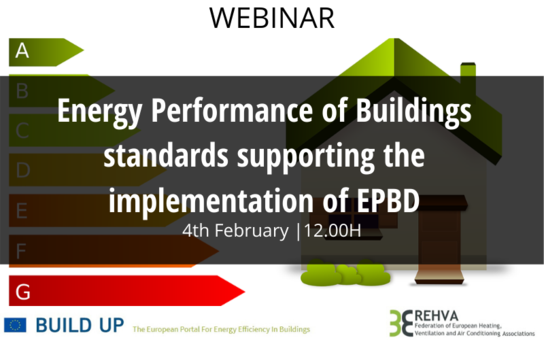This 1st webinar provides guidance and examples for the EPB standards’ flexibility applying the principle of subsidiarity. Flexibility means that national choices are possible in the methodology, input data and references to other standards.
Clearly identified options and national data remain necessary due to differences in climate, culture and building tradition, building typologies, policy and legal frameworks (including the type and level of quality control and enforcement). This is foreseen in the set of EPB standards via options that can be chosen according to a specific template: the “Annex A/Annex B approach” separating the harmonized procedures in the EPB standards from the national or regional options (choices).
Each EPB standard has the following two Annexes:
- Annex A (normative): mandatory (empty) framework template for choices and input data and references to other EPB standards;
- Annex B (informative): framework template of Annex A completed with one set of voluntary default choices and input data and references to other EPB standards.
In general, each individual user of the EPB standard is free to create his/her own data sheet according to the template of Annex A (i.e. to replace the default choices and values of Annex B).
For instance, private parties can mutually agree (private contract) to use any specific set of choices and values (a completed data sheet according to the template of Annex A) for the assessment of the energy performance for their private use.
In addition national or regional authorities can mandatory prescribe a specific set of choices and values (a specific data sheet according to the template of Annex A, replacing the default choices and input values of Annex B) for the assessment of the energy performance in the context of their building regulations (or different sets, depending on the application).
Annex I of Directive (EU) 2018/844 of the European Parliament and of the Council of 30 May 2018 amending Directive 2010/31/EU on the energy performance of buildings and Directive 2012/27/EU on energy efficiency requires Member States to describe, by 10th March 2020, their national calculation methodology following the national annexes of the overarching standards, namely EN ISO 52000-1, 52003-1, 52010-1, 52016-1, and 52018-1, developed under mandate M/480 given to the European Committee for Standardisation (CEN). This provision shall not constitute a legal codification of those standards.’
Recordings
- General Introduction by Camilo PAEZ, Sustainable & Energy Efficient Architecture and Urban Design consultant (BuildUp Editorial Board)
- EPBD and EPB standards keynote by Dimitrios ATHANASIOU, Policy Officer, DG ENER, European Commission
- General guidance and introduction to national options (choices) by Annet VAN DER HORN – DE VRIES, Standardization consultant for building-construction, NEN Dutch Standards Body
- Case study: sharing the Italian experience with the national options (choices) by Laurent SOCAL, EPB expert, Italy
- Moderated Q&A by Camilo PAEZ
Series of webinars on the EPB standards
This webinar series is jointly organized by BUILD UP and EPB Center’s experts under the scope of Service Contract ENER/C3/2017-437/SI2-785.185 “Support the dissemination and roll-out of the set of Energy Performance of Buildings standards developed under EC Mandate M/480” (duration September 2018 - September 2021).

